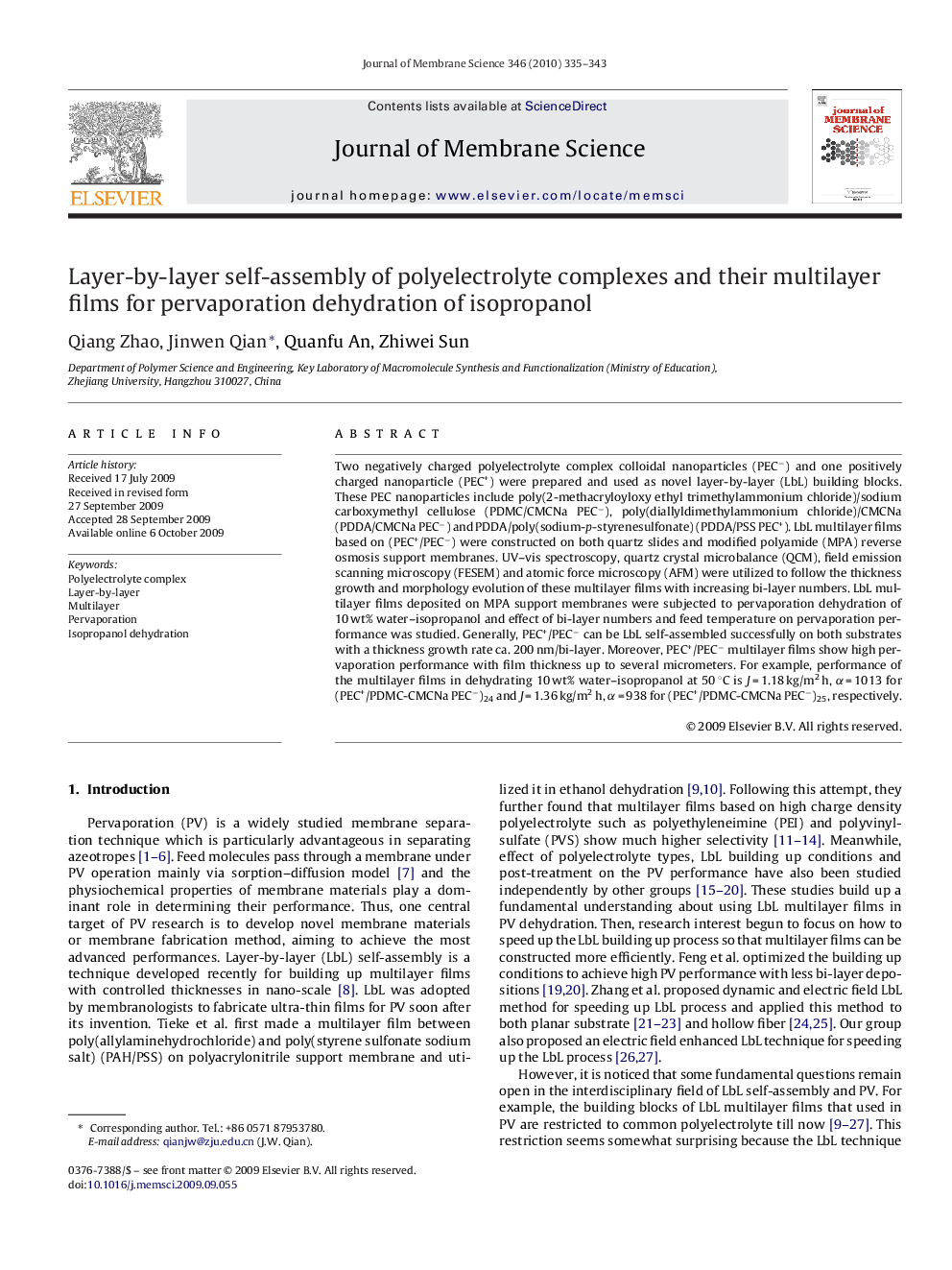| Article ID | Journal | Published Year | Pages | File Type |
|---|---|---|---|---|
| 636821 | Journal of Membrane Science | 2010 | 9 Pages |
Abstract
Two negatively charged polyelectrolyte complex colloidal nanoparticles (PECâ) and one positively charged nanoparticle (PEC+) were prepared and used as novel layer-by-layer (LbL) building blocks. These PEC nanoparticles include poly(2-methacryloyloxy ethyl trimethylammonium chloride)/sodium carboxymethyl cellulose (PDMC/CMCNa PECâ), poly(diallyldimethylammonium chloride)/CMCNa (PDDA/CMCNa PECâ) and PDDA/poly(sodium-p-styrenesulfonate) (PDDA/PSS PEC+). LbL multilayer films based on (PEC+/PECâ) were constructed on both quartz slides and modified polyamide (MPA) reverse osmosis support membranes. UV-vis spectroscopy, quartz crystal microbalance (QCM), field emission scanning microscopy (FESEM) and atomic force microscopy (AFM) were utilized to follow the thickness growth and morphology evolution of these multilayer films with increasing bi-layer numbers. LbL multilayer films deposited on MPA support membranes were subjected to pervaporation dehydration of 10 wt% water-isopropanol and effect of bi-layer numbers and feed temperature on pervaporation performance was studied. Generally, PEC+/PECâ can be LbL self-assembled successfully on both substrates with a thickness growth rate ca. 200 nm/bi-layer. Moreover, PEC+/PECâ multilayer films show high pervaporation performance with film thickness up to several micrometers. For example, performance of the multilayer films in dehydrating 10 wt% water-isopropanol at 50 °C is J = 1.18 kg/m2 h, α = 1013 for (PEC+/PDMC-CMCNa PECâ)24 and J = 1.36 kg/m2 h, α = 938 for (PEC+/PDMC-CMCNa PECâ)25, respectively.
Related Topics
Physical Sciences and Engineering
Chemical Engineering
Filtration and Separation
Authors
Qiang Zhao, Jinwen Qian, Quanfu An, Zhiwei Sun,
